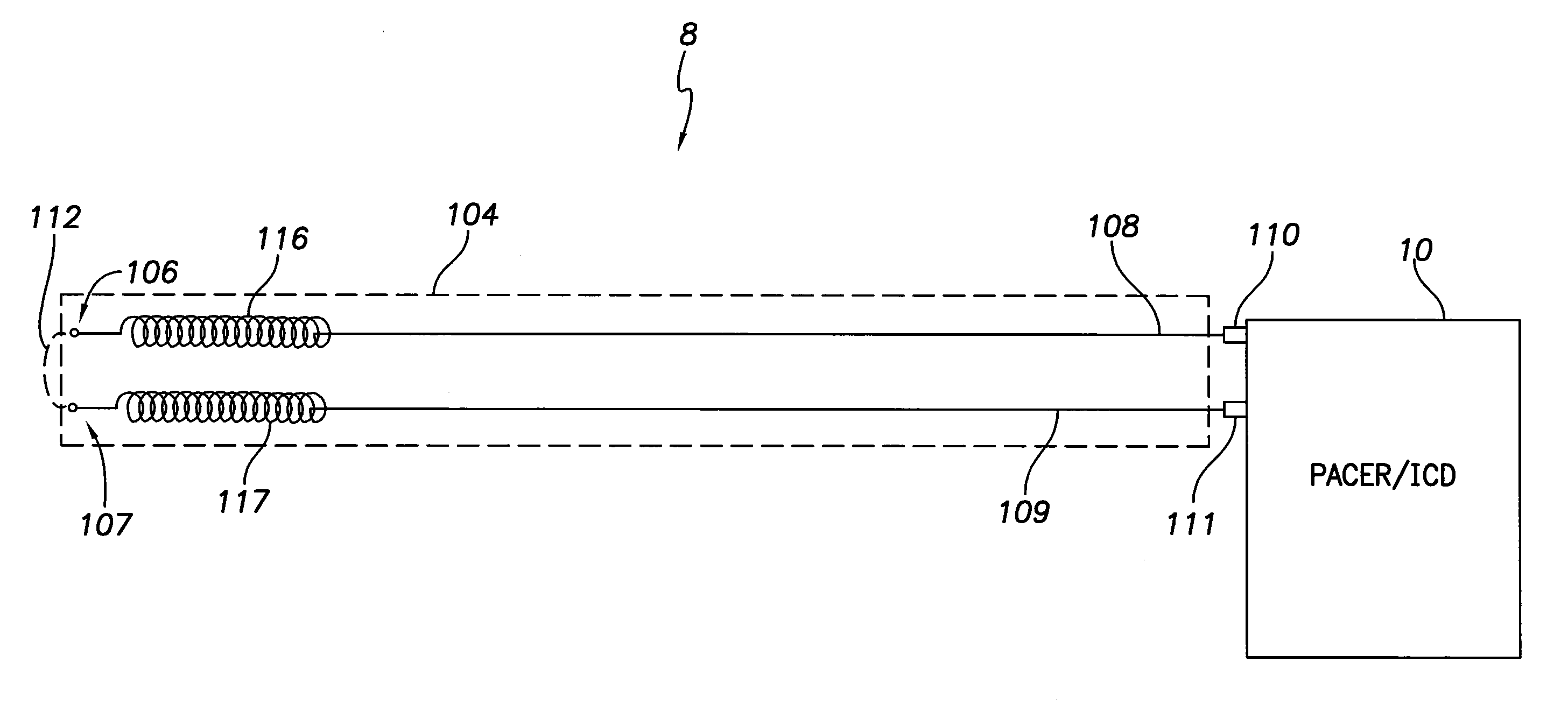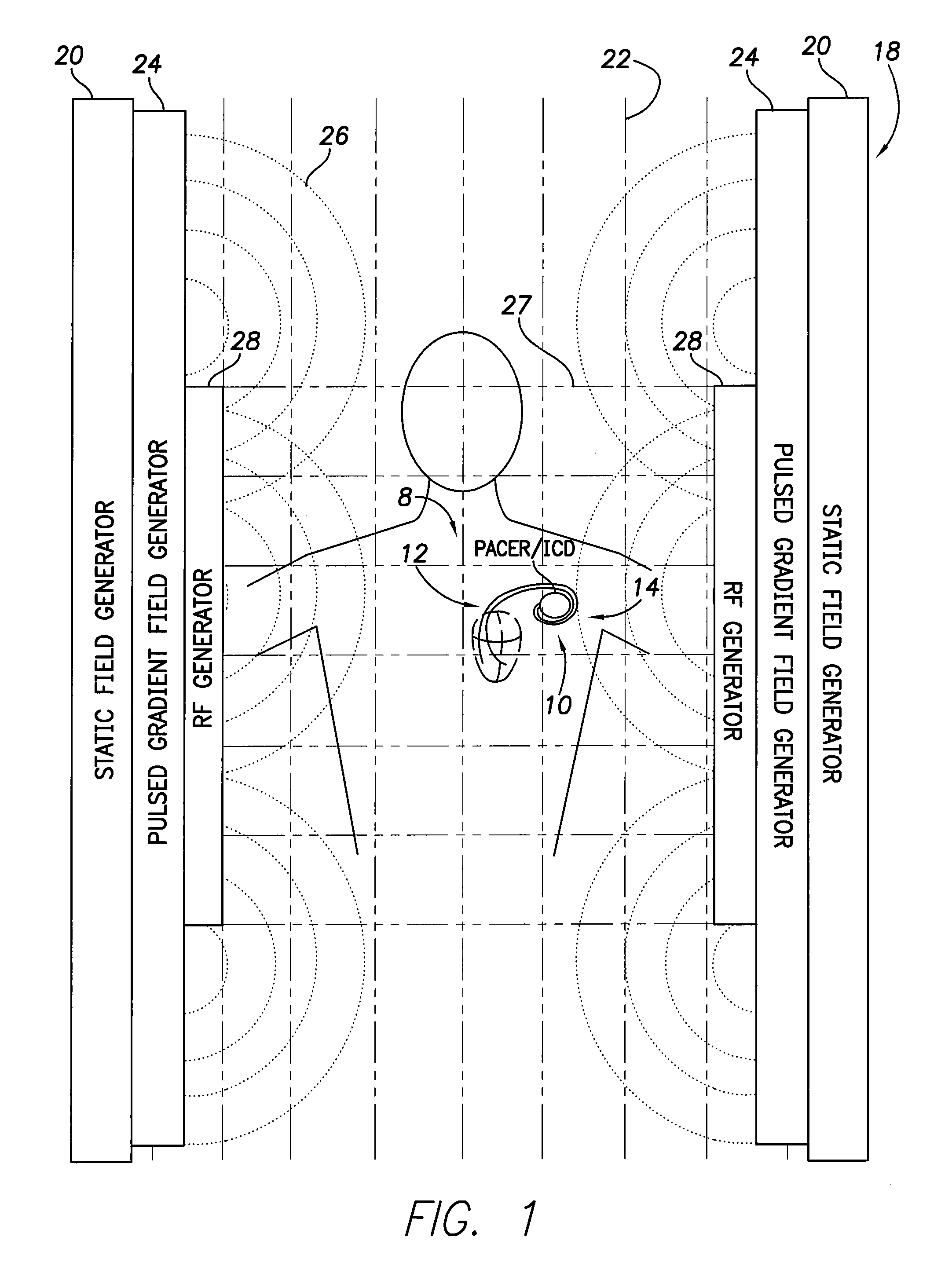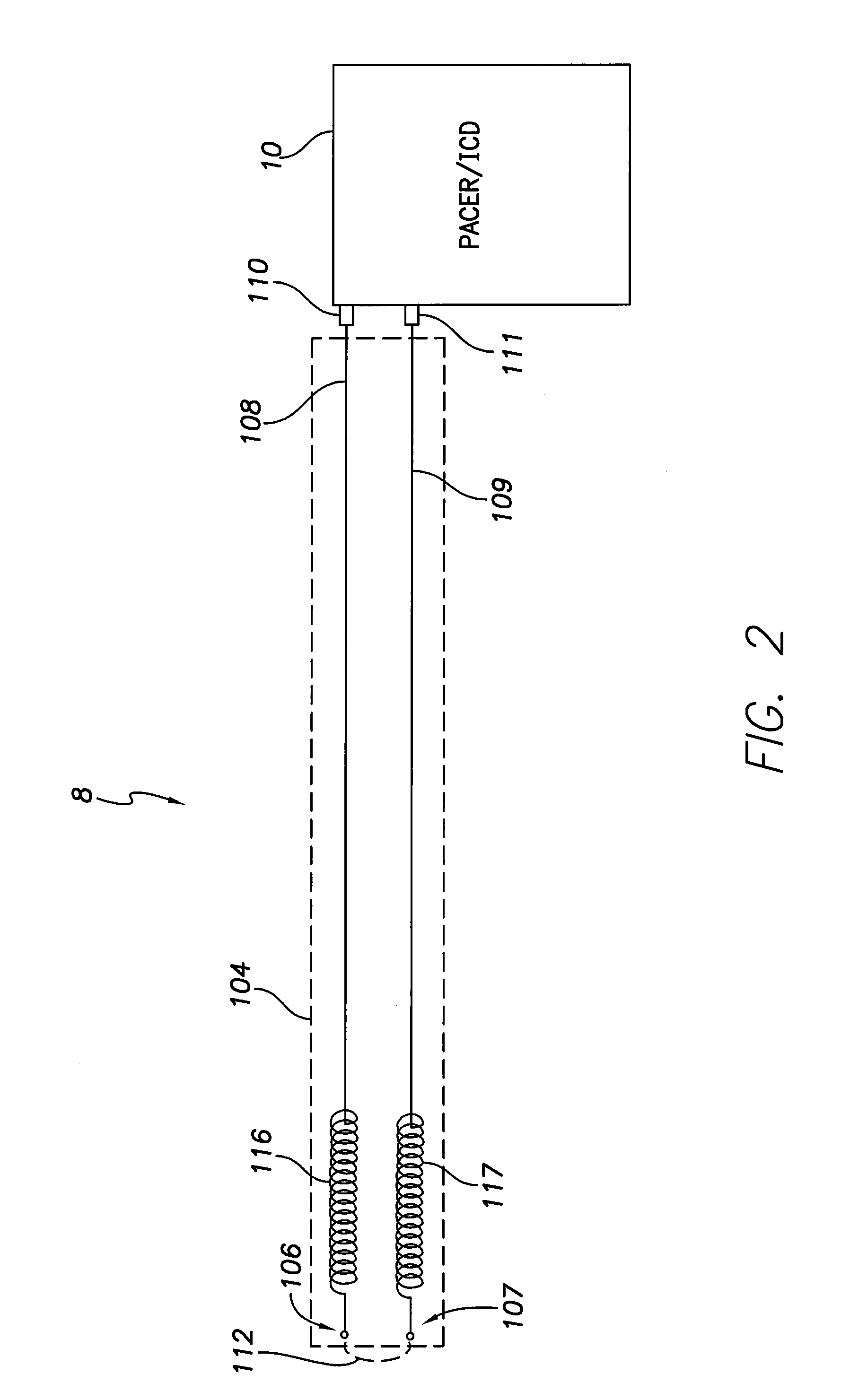Implantable medical device lead incorporating insulated coils formed as inductive bandstop filters to reduce lead heating during MRI
a technology of lead and inductive bandstop, which is applied in the direction of internal electrodes, transvascular endocardial electrodes, therapy, etc., can solve the problems of joule heating in cardiac tissues around the electrodes of leads, potential damage to adjacent tissues, and patients with implantable medical devices such as pacemakers. to achieve the effect of reducing heat during mris
- Summary
- Abstract
- Description
- Claims
- Application Information
AI Technical Summary
Benefits of technology
Problems solved by technology
Method used
Image
Examples
Embodiment Construction
[0039]The following description includes the best mode presently contemplated for practicing the invention. The description is not to be taken in a limiting sense but is made merely to describe general principles of the invention. The scope of the invention should be ascertained with reference to the issued claims. In the description of the invention that follows, like numerals or reference designators will be used to refer to like parts or elements throughout.
Overview of MRI System
[0040]FIG. 1 illustrates an implantable medical system 8 having a pacer / ICD 10 for use with a set of bipolar pacing / sensing leads 12. In the example, proximal portions 14 of the leads have been wrapped around the pacer / ICD, as can occur if the clinician chooses to wrap excess portions of the lead around or under the device during device implant. As explained, the coiling of the lead around or under the pacer / ICD by the clinician can adversely affect heat reduction achieved by RF filters within the lead (n...
PUM
 Login to View More
Login to View More Abstract
Description
Claims
Application Information
 Login to View More
Login to View More - R&D
- Intellectual Property
- Life Sciences
- Materials
- Tech Scout
- Unparalleled Data Quality
- Higher Quality Content
- 60% Fewer Hallucinations
Browse by: Latest US Patents, China's latest patents, Technical Efficacy Thesaurus, Application Domain, Technology Topic, Popular Technical Reports.
© 2025 PatSnap. All rights reserved.Legal|Privacy policy|Modern Slavery Act Transparency Statement|Sitemap|About US| Contact US: help@patsnap.com



